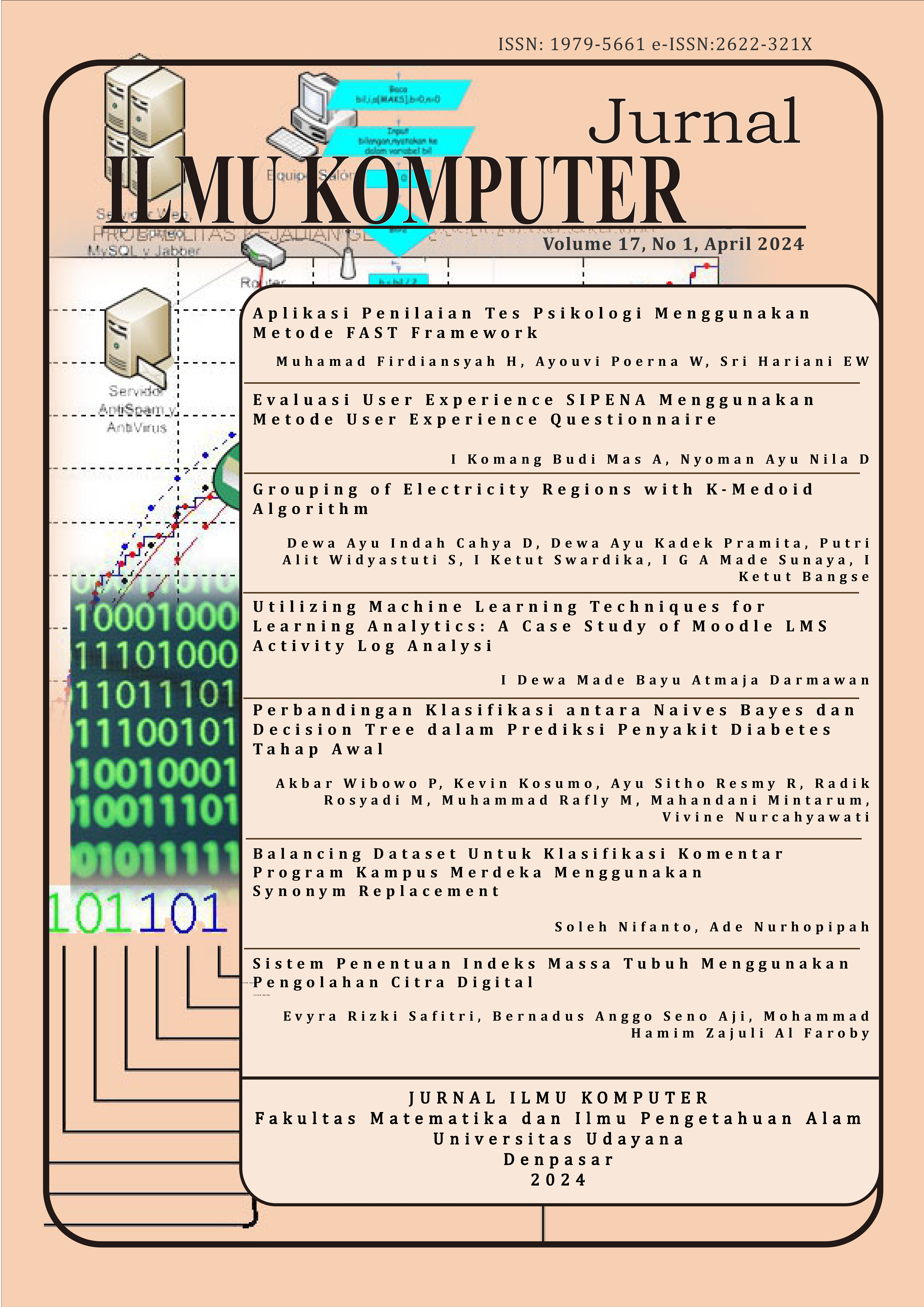Perbandingan Klasifikasi antara Naives Bayes dan Decision Tree dalam Prediksi Penyakit Diabetes Tahap Awal
Abstract
Diabetes is a health condition characterized by an elevated blood glucose level. There are two types, namely diabetes type 1 and diabetes type 2. Diabetes type 1 is caused by a lack of insulin production by the pancreas. Symptoms of diabetes include excessive thirst, frequent urination, and constant hunger. Classification is a process that helps us group data or information into categories based on similar characteristics. In the context of diabetes, classification methods can be used to group individuals based on their risk levels of developing diabetes. By using classification methods, doctors can determine an individual's risk of diabetes and design an appropriate treatment plan. This study involves a comparison between the Naïve Bayes and Decision Tree methods. The results of this research indicate that the algorithm generated is the best among the two algorithms in identifying diabetes patients. An accuracy of 66.67% was obtained for Naïve Bayes, while an accuracy of 91.67% was obtained for Decision Tree. In this study, it was found that the Decision Tree method has a higher accuracy rate than the Naïve Bayes method in the case study and data testing.





 Submissions
Submissions






